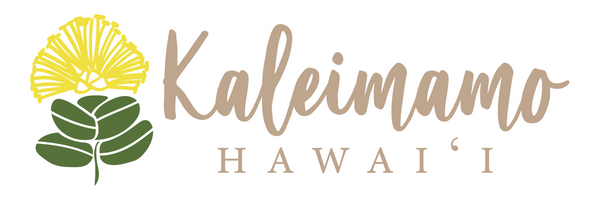Collection: Ōpū Ao
No products found
Use fewer filters or remove all
About this print
Ōpū Ao

Hawaiians use nature as a guide. Reading various cloud formations helps Hawaiians navigate and predict weather and are sometimes seen as hōʻailona (symbols) for future and current events. Close observation has resulted in some 500 Hawaiian names for clouds, a few of which are featured in this print, including ao ʻōpua, ao lālahilewa, pālāmoa, ʻālaʻapapa, kahaʻea, and ao loa.
Ao ʻōpua are puffy, cumulus clouds. They are often banked up together and interpreted as omens.
Ao lālahilewa are cirrus clouds. These clouds are high in the atmosphere and when scattered are a good sign that the weather will be good.
Pālāmoa are thick clouds and a sign of rain when seen toward the east.
ʻĀlaʻapapa is a long cloud formation.
Kahaʻea are also cumulus clouds and a sign of rain.
Ao loa is a long stratus cloud along the horizon and a figurative term for a distinguished person.


According to Hawaiian scholar David Malo:
The clouds, which are objects of importance in the sky, were named from their color or appearance. A black cloud was termed eleele, if blue-black it was called uliuli, if glossy black hiwahiwa, or polo-hiwa. Another name for such a cloud was panopano.
A white cloud was called keokeo, or kea. If a cloud had a greenish tinge it was termed maomao, if a yellowish tinge lena. A red cloud was termed ao ula, or kiawe-ula or onohi-ula, red eye-ball. If a cloud hung low in the sky it was termed hoo-leivalewa, or the term hoo-pehu-pehu, swollen, was applied to it. A sheltering cloud was called hoo-malu-malu, a thick black cloud hoo-koko-lii, a threatening cloud hoo-weli-weli. Clouds were named according to their character.
If a cloud was narrow and long, hanging low in the horizon, it was termed opua, a bunch or cluster. There were many kinds of opua each being named according to its appearance. If the leaves of the opua pointed downwards it might indicate wind or storm, but if the leaves pointed upwards, calm weather. If the cloud was yellowish and hung low in the horizon it was called newe-newe, plump, and was a sign of very calm weather.
If the sky in the western horizon was blue-black, uli-uli, at sunset it was said to be pa-uli and was regarded as prognosticating a high surf, kai-koo. If there was an opening in the cloud, like the jaw of the a'u, (sword fish), it was called ena and was considered a sign of rain.
When the clouds in the eastern heavens were red in patches before sunrise it was called kahea (a call) and was a sign of rain. If the cloud lay smooth over the mountains in the morning it was termed papala and foretokened rain. It was also a sign of rain: when the mountains were shut in with blue-black clouds, and this appearance was termed pala-moa. There were many other signs that betokened rain.
If the sky was entirely overcast, with almost no wind, it was said to be poi-pu (shut up), or hoo-ha-ha, or hoo-lu-luhi; and if the wind started up the expression hoo-ka-kaa, a rolling together, was used. If the sky was shut in with thick, heavy clouds it was termed hakuma, and if the clouds that covered the sky were exceedingly black it was thought that Ku-lani-ha-koi was in them, the place whence came thunder, lightning, wind, rain, violent storms.
(See Hawaiian Antiquities Moʻolelo Hawaiʻi, Honolulu Hawaiian Gazette Co., Ltd. Translated from Hawaiian by Dr. N. B. Emerson, 1898.)


The weather is always changing and observing those changes over time in the clouds, wind, and other elements helps Hawaiians predict upcoming weather. Navigators use these techniques to safely guide their canoes over vast distances of ocean. Mahiʻai (farmers) and lawaiʻa (fishermen) use these guides to ensure a successful planting or safe fishing trip.
This print was created in partnership with Kaille Harris, an incredibly talented watercolor and digital artist and owner of Under the Moon.
